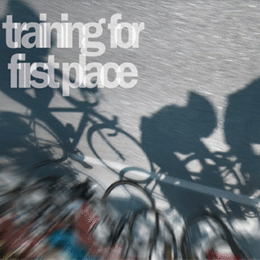
The warm weather is here and that means it’s time to start training for upcoming events like the annual Broad Street Run in Philadelphia, along with local 5Ks, tough mudder races and more. If you’re training to win, or even just to compete, before you lace up your sneakers and jump right into training, get some expert advice to make sure you’re maximizing your training time while avoiding potential injuries.
Ease into exercise
One of the biggest mistakes someone in training can make is to do too much too soon. In addition to setting an athlete up for injury, training hard when out of shape will cause stiffness and soreness, something that makes many people lose their motivation.
“Start with short goals,” says Dr. Adam Zucconi of Premier Orthopedics Associates. “Do not go from zero to 100 by going from a stagnant life to three miles in one day.”
In fact, Zucconi recommends anyone who has been sedentary should start moving and stretching two weeks before officially training. The moving can be walking a block and then running a block, or doing the same in between telephone poles. After the two weeks is up, start training and building up endurance.
“To work your way up for distance, comfortably get your run up to 30 minutes. Once you do that, knock out a day of cross training every few days when you’re not running,” advises Dr. Sean McMillan from Lourdes Orthopedic Sports Medicine. Cross training can be biking, swimming or some other cardiovascular exercise along with strength training.
“To try to go further, tack on another mile every third run. Then make that your new benchmark,” says McMillan. “That’s how you start getting distance.”
Stretch and strengthen
When training for any type of race, stretching and strength training can be as important as endurance training. They will help to prevent injuries.
“Sixty to 70 percent of injuries are from people not being stretched out properly,” says McMillan.
To properly stretch, Zucconi recommends first warming up for 10 minutes to get the heart rate up by doing exercises like jogging, jumping rope and pushups.
“Follow the warm-up by static stretching each body part for one minute,” he says. To do a static stretch, elongate the muscle as far as tolerable and hold. After warming up and stretching, begin training for the specific event.
“Strength training can maximize training for running, swimming and biking. Increased strength will improve muscular endurance and when done correctly, make it easier to perform on the trail, in the pool or on the bike,” says CJ Appenzeller, owner and head strength coach of Appenzeller Training Systems.
Strengthening the buttocks muscles—the gluteus maximus, minimus and medius—is important for preventing injuries, according to Dr. Michael Ross of the Rothman Institute.
“Anything you do on one foot will help strengthen the gluteus minimus and medius,” says Ross. He suggests standing on one foot or doing lunges. “For the gluteus maximus, squats and kettle bell swings are good things.”
The other muscles Ross suggests strengthening are the shoulder blade stabilizers. A simple Y-T-I exercise, where the arms form the letters, can be used to strengthen these muscles. Directions for this exercise can be found easily online.
Minding past injuries
People who do too much too soon or don’t train with proper form often end up with injuries.
“Hopefully people have been seen and treated in physical therapy for past injuries,” says Ross. “When you’re injured, don’t ignore it or push through the pain.”
Once cleared to start training after an injury, in addition to implementing any recommendations a physical therapist or trainer has made based upon the specific injury and the reason why it occurred, adding in regular stretching and strength training are two of the best ways to prevent future injuries.
“If you don’t strengthen the stabilizing muscles, you open up the option to reinjure,” says Zucconi.
Tough mudders and your teeth
McMillan says he sees many injuries after the team challenge obstacle course events known as tough mudders or mud runs, which have become popular in the past few years. Not everyone realizes the upper body strength needed for these events.
“To train, work the entire body,” he says, “and focus on upper body strength exercises like pushups, planks and pull-ups as well as core exercises.”
Because the mud makes the obstacle courses slippery, McMillan also says it’s important to wear a mouthpiece. “I see one patient after every tough mudder who has slipped and knocked out a tooth,” he says.
Footwear is an important consideration for these events, too. “The terrain is way more uneven than other races,” says Dr. Ross. “Accidents tend to be more traumatic in nature from falling or tripping. Footwear with good traction is recommended.”
Gear
All the experts would agree that wearing the right footwear for the right event is important.
“For cyclists, a helmet, a good padded seat and handle bars that are adjusted for your back are important,” says McMillan. Most bike stores will be able to help adjust handlebars correctly.
Appenzeller recommends a piece of gear that not everyone thinks about—food. “Pre-, during-, post-race nutrition is important,” he says. “For longer races a prerace meal that’s heavy on complex carbohydrates like brown rice or quinoa is key to an adequate energy level going into a race. Also important are during-race carbohydrate and sodium solutions such as gel packs and sodium tablets that dissolve in water.”
Zucconi also recommends a comfortable bed. “Getting six-eight hours of sleep each night is important while training,” he says. A good night’s rest will help boost cortisol levels that promote healing.
Published (and copyrighted) in Suburban Family Magazine, Volume 7, Issue 2 (March, 2016).
For more info on Suburban Family Magazine, click here.
For information about advertising in Suburban Family Magazine, click here.
To find out where to pick up your copy of Suburban Family Magazine, click here.




